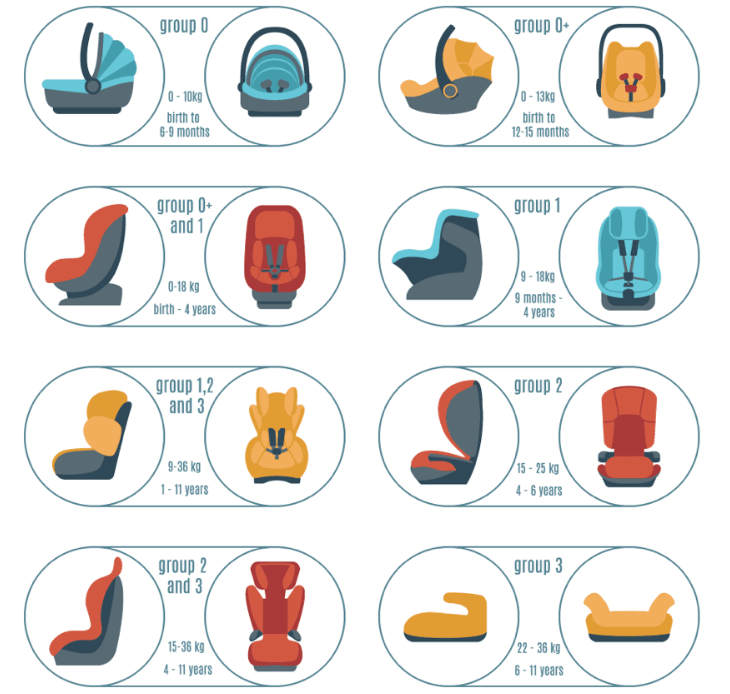Thanks to the competitive market, we now have a variety of infant car seats that we can choose from ranging from different brands, styles, colors, size, cloth materials and of course, prices. Yet how do we know which one to choose? Let us read on and find out!
There are three main types of infant car seats available on the market today and we will highlight the advantages of each according to the needs of the consumer: infant car seats, convertible car seats, and 3 in 1 car seats.
Infant car seats
Mobility: These are usually the smallest and lightest of all three. If you are a parent(s) that is constantly on the go, or heavily dependent public transportation, this is usually the preferred type. One of the biggest advantages of this type of infant car seat is that they can be carried around easily.
Flexibility: Since this type of car seat is designed to be light and mobile, some infant car seats can easily be removed from a vehicle and transferred to a stroller without much hassle. Even if you do not own a vehicle, the added benefit to have an infant car seat on a stroller can let parent(s) take their infants around in a stroller and then detach easily later on if necessary.
Disadvantage: Of course, all infants can easily outgrow these types of seats quite quickly. At around the age of two or depending on the size and weight of the infant, you will have to start looking for a bigger car seat to accommodate them. This means spending more time for research and money again for a bigger car seat.
Convertible car seats
Time: Convertible car seats are one of the best value for money item you can buy when it comes to car seats. As discussed in our last posting, these “grow-with-your-child” seats means you do not have to worry about buying a new seat once your infant outgrows the smaller infant car seat.
Flexibility: These seats offer both rear-facing and forward-facing seat features with just a press of a button. In addition, these seats can rotate 90 degrees for parent(s) to place an infant from a stroller into a convertible seat in a vehicle.
Disadvantage: One of the biggest disadvantages for these convertible seats is that they are bulkier and heavier than infant car seats. They also cannot be carried around like infant seats can, and cannot be attached to a stroller for flexibility.
3 in 1 car seat
Flexibility: This type of car seat will save you time and money when comparing to the prior two. This type of car seat let your child grow from a little newborn to around 100 lb (45 kg). However only a few provide rear-facing, forward-facing and booster seat (booster seats are cars seats that cater towards children who have outgrown car seats of their size and weight) options.
Flexibility: Of course, this is the best value per dollar spent as the infant grows to a younger adolescent stage and they can stay in the same car seat throughout. Parents do not have to keep buying and selling their different car seats as their children grow.
Disadvantage: Some of the 3 in 1 car seats do not offer rear-facing options so please ensure when parents choose to buy the car seat, to select the seat that is best suited for them.
Remember, choosing the right product may better suit the infant’s comfort, safety, and of course long-term commitment to the seat itself. Think of what kind of seat you would buy if you were the infant yourself.
The picture below shows different types of car seats available on the market today. Group 0 is usually referred to the infant car seat; group 0-1 shows rear-facing car seat; group 1, 2, and 3 (3rd row) show the convertible car seat type, and the last row shows 3 in 1 car seat (left column) meanwhile the right column shows booster seat.
Pic:
www.leasingoptions.co.uk/news/blog/guide-to-child-car-seats/5958
Text:
www.whattoexpect.com/baby-products/car-seats/best-infant-car-seats/

